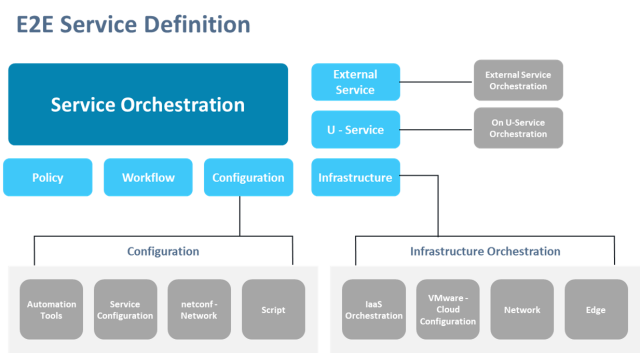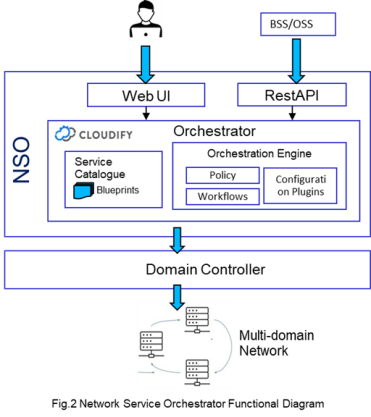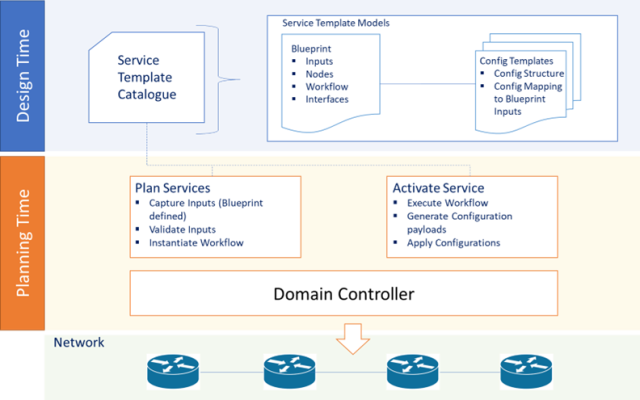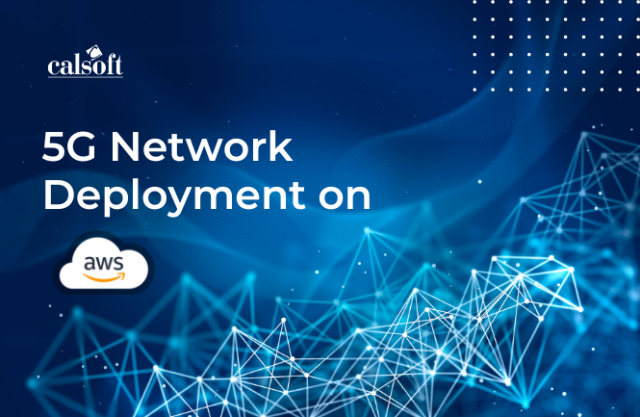Modern enterprises rely on network service orchestration and automation to achieve agility and scalability. The Cloudify approach offers a transformative solution, seamlessly integrating network functions with advanced automation to streamline operations and enhance performance. Telecom and enterprise networks are getting more complex with technologies like 5G, edge, IoT, cloud-native VNFs. That’s where network service orchestration and automation step in. This blog explores how Cloudify’s innovative methods are reshaping network management, driving operational excellence, and enabling businesses to stay ahead in a competitive environment. Join us as we delve into the Cloudify way of orchestrating and automating network services and discover how it can revolutionize your network infrastructure.
Why Automation Matters More Than Ever
The telecom industry is going through a major digital transformation; propelled by several drivers including the advent of 5G networks, Edge Computing, the Internet of Things (IoT), and transformative network technologies such as Software-Defined Networking (SDN), Network Functions Virtualization (NFV), and cloud-native deployment practices. The demand for complete digital & personalized experience for the end customer is rising along with the need for Communication Service Providers (CSPs) to provide agile, on-demand, and flexible services over a hybrid network. In addition to a rapidly changing competitive landscape, epitomized by on-demand services and flexible pricing models, CSPs are convinced to embrace the digital transformation journey, where network service automation stands as the key pillar.
Carriers are now delivering services that need agility, programmatic control, and predictability with no exceptions. Manual provisioning? Too slow. One-off scripts? Too brittle. Mistakes in configuration? Too costly. Industry data backs this up: the network automation and orchestration market are projected to leap from $18.9 billion in 2023 to $68.4 billion by 2030, growing at a solid CAGR of 20%. Automation facilitates faster deployments, fewer errors, and greater reuse, giving teams the flexibility to roll out new services across multi-domain networks.
Key Trends in Network Service Automation
Network Service Automation has seen stupendous growth with the communication service providers. Most of the CSP IT stacks are implementing network service automation based on either open-source tool viz. Ansible, Chef, Kibana, Grafana, Splunk, and Python or extending commercial tools viz. Cloudify to build their own automation solutions.
Below are some key industry trends aiding the network service automation solutions:
- Intent-driven Service Orchestration
Intent-Based Networking (IBN) is a concept that has been around for quite a few years, but it is now turning into reality with advanced AI/ML algorithms & techniques available. Fundamentally, the idea behind IBN is to have pre-defined intents exposed to the Northbound Interface (NBI) applications. These pre-defined intents specify network policies and orchestration workflow providing what and how to implement an intent, which is passed to an orchestration system for automated provisioning of network service. The same intents can also be used to monitor, identify, and react in real-time to changing network conditions and their impacts on the intents. Intent-Based Networking, empowered with the introduction of powerful AI/ML & cloud technologies, is a key driver enabling autonomous networks which are more intelligent, more independent, and capable of adapting to dynamic changes. - Autonomous Network
An autonomous network is a network that runs with minimal or no human intervention, and can configure, monitor, and maintain itself independently. Through the launch of autonomous networks, CSPs can provide automated intelligent network services evolving towards autonomous Information and Communication Technology (ICT) services eventually and will incubate a new collaboration model and production model to upgrade the telecom industry market structure as well as customer experience. Autonomous networks are characterized by properties such as self-configuring, self-healing, self-optimizing, self-evolving, and delivering an infrastructure that has the abilities of zero-wait, zero-trouble, zero-touch service offering and operations from the user perspective. - ETSI ZSM (Zero-touch Network and Service Management)
ETSI ZSM aims to provide a holistic, and end-to-end network and service management concept which, among others, enables the integration of Experiential Networked Intelligence (ENI), Network Functions Virtualization (NFV), and Multi-access Edge Computing (MEC) management demands. ZSM is developing a versatile, service-oriented network and service management framework that facilitates cross-domain, end-to-end management. It also offers tools for closed-loop automation and data-driven management algorithms, which can leverage machine learning and artificial intelligence.
For more information in this genre, you can also check out our blog on Top Technology Trends in 2025
Automation Solution – with Cloudify: What Makes Cloudify Different
Cloudify is an open-source orchestration platform designed for multi-cloud and edge environments. It helps organizations seamlessly transition to public cloud and cloud-native architectures by automating their current infrastructure while also managing cloud-native and distributed edge resources. Cloudify also allows users to manage different orchestration and automation domains as part of one common CI/CD pipeline.
Key features of Cloudify are:
- Service Composition Domain-Specific Language (DSL), is a feature that enables modeling of a composite service, containing components from multiple Cloudify services and other orchestration domains. It specifically handles modeling of the relationship between services, cascading workflows, shared resources, distributed life-cycle management, and more.
- Built-in integration with infrastructure orchestration domains such as AWS Cloud formation, Azure ARM, Ansible, and Terraform. Calsoft developed a solution that helps telco deploy 5G on AWS with ease. Contact us to deploy 5G on AWS in our 5G Lab.
- Orchestration of cloud-native Kubernetes services are a feature that orchestrates across multiple Kubernetes clusters including OpenShift, EKS, GKE, AKS, and KubeSpray. Additionally, Cloudify also offers a built-in blueprint to automate the cluster setup and configuration.
- Built-in integration with Jenkins and other CI/CD platforms provides a single ‘stop-shop’ for integrating all orchestration domains to the CI/CD pipeline.
- Consistent workflow management across all infrastructure domains. Cloudify deploys intent-based modeling (also known as Infrastructure as Code) where users define the desired state of the system rather than the way to get there. Cloudify autogenerates the install, uninstall, heal, and scale workflow from that definition (implicit workflow). Cloudify also allows users to define their own custom workflow to interact with the system
- Enhanced Security and Role-Based Access Control (RBAC)Â support Cloudify provides end security for all its internal and external resources. This includes support for secret stores, encryptions of all internal communication channels, as well as multitenancy and RBAC support to control who gets access to each of the Cloudify managed resources.
- Blueprint modeling and design using the Cloudify Composer Cloudify Spire are possible. The blueprint designer provides a simple way to write blueprints. It supports both textual and graphical editing and allows users to switch between these two modes during the same editing session.
Cloudify Architecture
The main aim of Cloudify is to provide a configurable automation solution, that is integration-ready with other standard frameworks. At the heart of Cloudify is the orchestration engine which creates & orchestrates the workflows. Integration with other frameworks and solutions is enabled using built-in and customizable Plugins. The key components of the functional architecture are as below:

- Cloudify Manager /Service Orchestrator: The Cloudify Manager is used as the service that is responsible for the execution of the automation workflow. The manager can have a different role depending on the layer in which it operates. For example, it can serve as a specific domain orchestration, where it manages the resources of a specific service. At the same time, it can be used as an ‘Orchestrator of Orchestrators’ where it manages resources controlled by other orchestrators. The service orchestration is based on the Service Definition Blueprints which are highly configurable enabling rapid building of new services.
- E2E Service Modelling: This is a modeling language used to describe the lifecycle, relationships, and workflows between infrastructure and application resources, enabling the creation of comprehensive Service Definition Blueprints. Cloudify uses Topology and Orchestration Specification for Cloud Applications or TOSCA as the basis for its modeling language, making Cloudify DSL highly extensible. Some of the key features supported are Service Composition, Lifecycle Management, Relationship and dependency management, Extensibility through inheritance, and custom plugin
- Plugins: Plugins are used as generic resource libraries. Plugins are responsible for mapping any resource API endpoint into a set of TOSCA nodes that can be described in the blueprint. Cloudify comes with a rich set of built-in plugins that can be broken down into the following groups: Configuration plugins, Infrastructure orchestration plugins, Infrastructure plugins, Kubernetes plugins, and External Services plugins.
Case Study – Network Automation Solution
In this case study, our primary objective is to devise a robust Network Service Orchestration Solution. The aim is to facilitate the automation of network service planning and activation processes utilizing an open-source Domain Controller. Some of the key expectations from the solution were:
- Automation of the network service planning
- Out-of-box support for key Network Services
- Enable quick onboarding of new network services
- Ability to plan services via GUI and NBI BSS/OSS applications
- Support for multi-domain network
Calsoft designed & implemented a Network Service Orchestration solution leveraging the orchestration capabilities of the Cloudify tool to support the capabilities of designing network services and planning the network service instances based on the pre-defined service templates. The tool provides support for dynamic UI for network service planning and NBI integration capabilities with standardized Rest APIs. Some of the key features of the solution are:
- Zero Touch / One Touch Automation
- Self-service NetOps
- Model Driven Network Service Modelling
- Extensible Platform

The overall planning process is divided between two phases – Design Time and Planning Time.

- Design Time: The design time covers all the activities of defining new network service specifications by creating Service Templates (based on Service Blueprints and Configuration Templates) and adding the network service specifications to the network service catalog.
- Planning Time: The planning time covers the activities for instantiating and activating network services based on the pre-defined network service specifications.
The Network Service Templates are the most critical component of the overall solution enabling the crucial capabilities of model-driven service definitions and self-service abilities for network designers to rapidly define new network services (based on these service definitions) & launch network services into production without any need of heavy software development & deployments.
The Network Service Template is made of the following key components:
- Blueprints: Blueprints are YAML Ain’t Markup Language (YAML) documents written in Cloudify’s DSL (Domain Specific Language) based on TOSCA. Blueprints will describe the logical representation, or topology, of an application or infrastructure. These blueprints are bundled into a blueprint archive, which includes a primary blueprint YAML file along with any additional resources you wish to include, such as scripts, imports, and more
- Configuration Templates: Configuration templates are Jinja2 templates written as YAML documents. These provide the mapping to the Rest APIs for configuration RestConf and corresponding payload structures. These provide a robust method of defining modular network configurations powered by a fast, expressive, extensible Jinja2 templating engine.
Common Automation Hurdles—and How Cloudify Solves Them
The telecom market is constantly evolving with new business and technology disrupters influencing the service providers’ strategy, solutions, and services. To enable the service providers to rapidly respond to changing requirements it is key to support updating existing network services or launching new network services.
Version control chaos: Without it, service updates break older instances. Cloudify uses blueprint version tags stored in CI/CD that ensure each deployment tracks its definition.
Rigid UI screens: Each service UI requiring dev work? Not scalable. Calsoft’s dynamic schema converts inputs into forms that adapt to the blueprint.
Limited blueprint flexibility: How do you add behavior to inputs or UIs? Calsoft layers in metadata schemes so forms have context, not just fields.
The Next Wave: Intent, AI, Autonomous Operations What’s next? Networking is evolving toward intent, autonomy, and AI-driven decision-making.
- Intent-based orchestration declares “I want confidential VPN between site A and B,†and the system handles the rest.
- Autonomous network operations means systems that can self-heal, self-optimize, and even adapt to shifting traffic with minimal manual touch.
- AI/ML integration adds telemetry-aware feedback loops and network behavior adapts dynamically based on performance.
Conclusion
Digital transformation is reshaping CSPs, making agile service models critical. Cloudify’s intent-based orchestration, flexible service specifications, and adaptable platform enable this agility. As a technology-first company, Calsoft drives network automation to cut costs, simplify operations, and boost predictability through provisioning, orchestration, monitoring, AI-driven analytics, performance testing, and auditing—enhancing security and overall business value.






